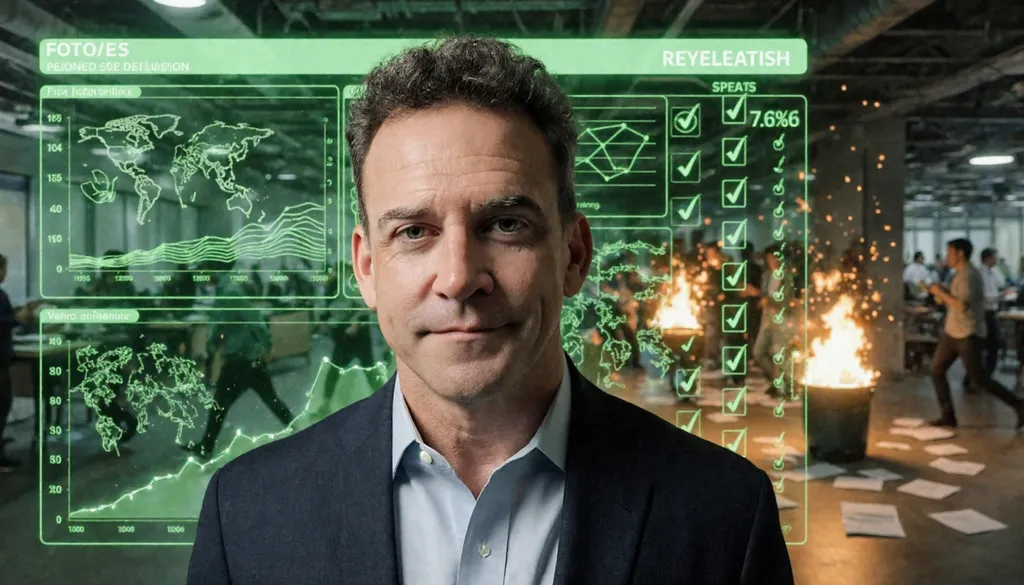
Projects Are Green, But Growth Is Missing
Everything looked great on paper – project dashboards all showing green status for budget, timeline, and scope. Yet somehow, some customers still weren’t expanding their use of our software.
This disconnect became apparent when I stepped into my role at PSignite (provider of the CPGvision trade promotion optimization platform) and reviewed how our current customers were doing.
Internally, we were checking all the boxes: delivering promised features on time and on budget. In fact, CPGvision promises an all-in-one solution that replaces disjointed spreadsheets with a unified trade spend management platform, even leveraging AI to help consumer goods companies plan promotions and maximize ROI on their trade spend (CPGvision). By our measures, things should have been going well.
So, why weren’t these happy project plans translating into more business?
The truth hit us when we realized we were measuring success by our standards, not the customer’s. It’s like that famous Bain & Company study: 80% of businesses think they’re delivering superior value, but only 8% of customers agree (Bain & Company). In our case, we had declared victory because we delivered what we promised. But from the customer’s perspective, their business outcomes were not yet achieved – and that gap was the reason they weren’t buying more.
The Customer’s Perspective: Are Their Goals Being Met?
To find out what was wrong, we had to put ourselves in our customers’ shoes and ask blunt, outcome-focused questions. And not just once, and not just to one person. We spoke to multiple stakeholders across the customer’s organization—executive sponsors, end users, IT leads, analysts—because each may have a different take on whether the goals that drove the purchase had been met.
This is where the getting to no mindset comes in: don’t stop when you hear a polite “everything’s fine.” Keep probing until you uncover any “no” answers that point to real obstacles.
Questions like:
- From your standpoint, have you accomplished all the goals that led you to purchase our solution?
- If not, what’s preventing you from reaching those goals?
These are not comfortable questions—they often expose issues people don’t want to admit. But asking them, validating answers across the organization, and listening without defensiveness is essential, because the customer’s perception of success is the reality that matters (Plexis Strategy).
It turns out this scenario is common in SaaS. Studies show nearly 44% of customers say the solutions they buy fail to deliver the expected value (Monetizely). That value gap is deadly for expansion: if a customer isn’t seeing a return, why would they buy more?
On the flip side, vendors who do ensure customers realize clear ROI enjoy much higher customer retention and growth. A Forrester study found companies that effectively demonstrate value achieve about 20% higher retention rates—and those retained, satisfied customers are primed to expand (Monetizely). In fact, giving customers tools to track ROI (like self-service dashboards) correlates with 18% higher expansion revenue on average (Monetizely).
Nick Mehta, CEO of Gainsight, sums it up well:
“The crazy thing is, you build a value engineering model that says the ROI you're going to get from buying a product. And then that's the last time you talk about the value.”
He advocates making value engineering an iterative process throughout the customer lifecycle—reviewing promised outcomes every six months against actual results. This transforms a one-time sales exercise into ongoing value validation that drives expansion (Diginomica).
Uncover the Real Roadblocks (Instead of Assigning Blame)
Digging deeper, we often found nothing was “wrong” with the software implementation itself—the promised features were delivered and working. Instead, the roadblocks were more nuanced:
- User Input Errors: Wrong or incomplete data entry meant inaccurate reports and underwhelming outcomes.
- Lack of Complete Usage: Teams skipped key features or didn’t provide the detailed inputs needed to drive trade effectiveness.
- Data Integration Breakdowns: One customer’s IT team changed a master data format without telling anyone, breaking the integration and producing bad or missing data.
It would be easy to chalk these problems up as the customer’s fault. But as the saying goes: Would you rather be right, or would you rather be rich? In business, “being right” by blaming the customer doesn’t get you more revenue. Helping them fix the problem—no matter the cause—does.
Take the data integration example: format changes and evolving source systems are a known challenge in enterprise software—data sources “keep evolving” and if you’re not ahead of it, integration problems can stop a project in its tracks (Astera).
That doesn’t mean you give away unlimited free services or absorb every responsibility. Sometimes closing the gap requires an investment on your part, but other times it’s about helping the customer plan and execute changes themselves — or having them pay you for additional services or training. The key is that you still own the plan and the outcome: you drive the process, coordinate the right actions, and ensure that the obstacles to value are removed so the customer reaches their goals.
Trust as the Foundation for Expansion
Addressing these issues requires trust. One of the best models for understanding trust comes from The Trusted Advisor:
Trust = (Credibility + Reliability + Intimacy) ÷ Self-Orientation (Trusted Advisor)
- Credibility – You know your stuff.
- Reliability – You do what you say you will.
- Intimacy – Customers feel safe sharing problems and doubts.
- Self-Orientation – You keep the focus on them, not you.
At PSignite, we improved trust by showing up consistently, asking hard questions, listening across multiple levels of the organization, and acting on what we heard. The lower your self-orientation and the higher your credibility, reliability, and intimacy, the more open customers are to sharing the roadblocks you can help remove.
It’s On You to Deliver (and Prove) the Value
Owning the outcome, not just the deliverables, means shadowing users, validating results, and adjusting until the customer is seeing tangible ROI. Large enterprise customers only expand when they’re confident they can get more ROI by rolling out further.
In SaaS—especially enterprise software—this is critical because acquiring a new customer costs 5×–25× more than retaining an existing one, and a 5% increase in retention can lift profits by 25–95% (Harvard Business Review, Lighter Capital).
If you made it this far, please consider signing up for my weekly newsletter. It's currently free and takes just 15 seconds — click here.
Bridge the Gap: Plan, Execute, and Verify
Once you identify what’s holding the customer back, create a joint get-well plan:
- Extra training for users.
- Technical fixes for integrations or features.
- Process changes to align with best practices.
Then execute, measure, and confirm you’ve reached “good.” The finish line isn’t “contract signed off”—it’s customer achieving the outcomes they bought your solution for.
As Plexis Strategy notes: customers decide whether to continue doing business with you based on their perception of value, not on whether you ticked off a task list.
Happy Customers = More Customers
When you get a customer to value:
- Churn risk drops dramatically.
- Expansion becomes natural.
- They become advocates who influence new business.
And remember: keeping an existing customer happy is far more cost-effective than replacing them. In SaaS, that’s the growth engine worth investing in.
In Part 2, I’ll explore how to “stay good”—keeping customers at peak value long after the initial go-live.


